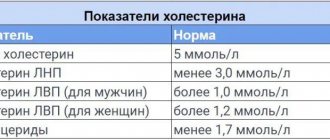Hello everyone! I continue to summarize and post in a condensed form my experience in electronics repair. I present my Top 10 most common malfunctions of tonometers, which was born as a result of accidental repairs of medical equipment and communication with other Masters. I won’t say that I’m a great specialist in this area, but I came across some things and successfully fixed them. Let's start the rating. The locations of malfunctions of tonometers and blood pressure meters are sorted by the frequency of occurrence of the malfunction.
Correct pressure measurement
To measure blood pressure, you need to put a special cuff on your arm.
It should be 1-2 centimeters above the inner bend of the elbow. The cuff must fit the person in size. It shouldn’t put too much pressure on your hand, but it shouldn’t “hang” on it either. After this, the air is pumped with a special rubber bulb, independently or with outside help. After this, the pressure will be known.
Enter your pressure
Avoiding errors in readings when measuring pressure
Sometimes the tonometer can give incorrect data, so you should always monitor its accuracy. First of all, you need to know that there are several types of devices:
- Mechanical tonometer. It is more difficult for them to measure pressure - this should be done by a doctor or a person with very good vision and hearing, who can accurately recognize the pulse in the headphones and the desired indicator on the dial.
- Electronic or automatic blood pressure monitor. This is a modern device that everyone can use - you just need to use it correctly and it will display the pressure on the screen.
It is impossible to say which of these devices is more accurate. If used correctly, they will both show the correct indicator. But in both cases errors are possible. An electronic device will most likely malfunction if the battery charge is low. It is also impossible to obtain the correct result if the bulb, electronic unit or cuff is faulty. Calibration of the mechanical apparatus is also necessary. To avoid mistakes, before measuring blood pressure, you should refrain from drinking alcohol, coffee and strong tea, smoking, and physical activity. You cannot talk or take your pulse when you are nervous. To obtain accurate readings, it is better to measure your pulse in the morning and evening three times, with breaks of 5-10 minutes. The lowest number will be the most accurate.
Motion indicator
On some tonometer models there is a motion indicator on the display. As a rule, it depicts a human figure.
Movements while using the device can cause the device to display incorrect data, which in turn will lead to an error in diagnosis. The appearance of a motion icon on the device screen encourages the user to assume a state of rest and take the measurement again.
Setting up a tonometer at home
There are several tips on how to test the mechanism for serviceability at home. There is a special installation that shows a certain pulse and breathing of a person, which it simulates. The tonometer is calibrated according to these data. But such an installation is very expensive and not everyone can afford it at home.
The second way is to connect two blood pressure monitors to one cuff, one of which will be precisely adjusted by a medical equipment specialist.
A reference tonometer can be set up at a pharmacy, after which you can calibrate your equipment using this data. An accurate device is necessary in the house, because its indicators can help to draw attention to the problem in time. It is necessary to check the equipment for malfunctions, and also always ensure that the pressure is measured correctly.
Why does the tonometer show different pressure? Users often ask about this when buying a new electronic device. It also happens that it shows different blood pressure (BP) if you measure it several times in a row. It turns out there are many reasons for this.
Why does the tonometer show the pressure incorrectly?
Tonometers are special medical devices that measure blood or eye pressure. In the latter case, the device is called a pneumotonometer. Such devices are an indispensable attribute of doctors. However, today blood pressure measuring devices are successfully used at home by many people, especially those suffering from hypertension and heart disease. A tonometer is even recommended for them, because patients must always keep their blood pressure under control in order to avoid complications caused by increased blood pressure. Tonometer readings are recorded as two measurements, for example, 120/80 mm Hg. Art. What do these numbers mean? This is the different pressure created in each of the two phases of the heart. The first reading is the highest blood pressure pumped by the heart. In our example, it is 120 - it is called systolic. The second reading is minimal. It is observed in diastole, when the heart relaxes, fills with blood, and then pushes it out. This “lower” pressure is referred to as diastolic.
The automatic tonometer responds to the following factors:
The sensitive sensor even reacts to air movement. You must behave calmly, not talk, keep your back straight. The tonometer cuff attached to the arm should be at the level of the heart. If you remove all interference and follow the instructions, the result will be correct. If you need to get a more accurate result, you can take measurements three times with the necessary break between them. After this, it is important to derive the arithmetic average. We must remember: the first indicator and the last may differ due to the artery getting used to compression or any involuntary movement, so triple measurements will provide more accurate data. We must remember that a decrease, as well as an increase in pressure beyond the normal range, is an alarm signal. It is necessary to find out the cause by contacting a cardiologist.
Very often, tonometers may not produce results at all or show incorrect results, as well as show different pressures for various technical reasons: they forgot to insert the batteries; the device is not used correctly; low-quality batteries that quickly fail. In order for electronic blood pressure monitors to work well, it is necessary to change the batteries on time. It is advisable to use only ALKALINE LR batteries for blood pressure monitors. They are more energy-intensive and guarantee a long service life, which is from 200 to 400 measurement cycles. Here, the word cycle means 2 – 3 times a day. Regardless of the manufacturer, LR batteries will ensure the operation of the tonometer for 4 – 6 months. When the tonometer is turned on, the display is tested, and if the device shows a symbol that indicates insufficient power, this means that the batteries are running low - it’s time to take care of new batteries. In addition to errors associated with measuring blood pressure with a device and technical reasons, different pressures can be completely physiological. It is worth remembering that active movements, stress, even sneezing and coughing increase blood pressure. This is a natural reaction and does not require medication. Blood pressure increases for a short time, and if you repeat the measurements a little later, the values will decrease significantly.
Indicator of correct cuff fixation
Example of correct cuff attachment
To avoid this factor, the display of many tonometers includes an icon for correct cuff fixation.
Indicator of correct cuff fixation
For the manufacturer OMRON, this icon looks like the abbreviation OK enclosed in a circle. The presence of an active symbol indicates correct fixation of the cuff.
Error correction
Errors may occur when using the tonometer. Some of them you can fix yourself. If this does not work for some reason, disassembling the device yourself is highly not recommended.
Firstly, without knowledge of the features of this device, you can only aggravate the situation. Secondly, after opening the tonometer and damaging the factory seals, the free warranty period of service is automatically canceled.
The table shows the most common errors and methods for eliminating them.
| Type of error | Causes | Correction Methods |
| Flashing heart sign | Heart rate too high | Remove the device from your wrist, wait 10-15 minutes, and then measure your blood pressure again. If the situation repeats, then most likely the indicators are correct. In this case, you need to consult a doctor. |
| E E Snowflake symbol | The cuff is full of air | You need to remove the device from your hand, turn it off, and then turn it on. Next, you should measure your blood pressure again. |
| E 78 Snowflake symbol | The cuff is not securely fastened or there was movement of the arm during measurement | Turn off the device, turn it on, measure blood pressure again. |
| Er 25 | The symbol “E” with any code indicates some kind of malfunction in the device. | You need to contact the service center. |
| Indicators are too low or, conversely, excessively increased | This error can occur for several reasons: |
1. The cuff is not fastened correctly.
2. The hand with the device is not at heart level.
3. There were movements or conversations during measurements.
4. The arm is overextended.
Note.
Blood pressure readings may change throughout the day. As a rule, this is not related to the operation of the device. Changes in blood pressure depend on the time of day, weather conditions, as well as the physical and moral state of a person.
Arrhythmia indicator
The arrhythmia indicator is an icon located on the device display. As a rule, it is located at the very bottom of the screen, closer to the center. Depending on the make and model of the device, the appearance of the icon can vary significantly, but most often this symbol looks like a flashing heart.
The icon lights up if the heart rhythm is uneven. This may indicate both the arrhythmia of the human heart and interference that arose during the measurement.
In order to exclude a random factor, you need to repeat the procedure after a few minutes. If, during three repetitions performed while the patient is at rest, an arrhythmia icon appears on the display, the user should report this fact to the therapist or cardiologist as soon as possible.
Storage and care
If you do not adhere to the rules for storing and caring for the tonometer, then the device is unlikely to last long. The more carefully you follow all recommended measures, the longer the measuring device will last.
- Do not expose the tonometer to impacts, falls or direct sunlight for a long time.
- Do not immerse the device in water or give it to children.
- If the tonometer is not used for a long time, the batteries must be removed from it.
- To avoid damaging the monitor and cuff, store the device in a special case.
If the device or cuff is dirty, do not use alcohol-based products, solvents, alkaline liquids, etc. for cleaning. It is best to wipe the monitor and cuff with a soft cloth (or slightly damp).
“Please help me understand the situation! — a letter to the editor of “Web Journalist” arrived the other day. — My mother is already 79 years old. Her blood pressure often “jumps.” I have been thinking about buying an electronic blood pressure monitor for a long time. Last week I finally decided. So what would you think? The first impression is that the thing is stylish, comfortable and very necessary. But... The tonometer is shamelessly “lying”! As soon as the cuff was placed on the mother's wrist, he showed 178/135. Horror! Everyone at home was seriously alarmed. I had to call an ambulance...
The doctors arrived, took out a regular tonometer with a bulb, and put a cuff on my shoulder. The pressure turned out to be… 125/90! They measured him again, and again... Everything was normal! Why, then, the readings of an electronic device (by the way, produced by a well-known Japanese one? The doctor just shrugged his shoulders... The next day I went to the pharmacy to exchange the device. But they assured me that everything was in order. They say that we carried out the measurements incorrectly. Strange ... Tell me what to do in such a situation? And is there a special service in Minsk that would check the accuracy of tonometers.”
The question is, of course, interesting... And very relevant! Today, about 15-20 models of tonometers of various types are sold in shops and pharmacies in Minsk. These are not only traditional “pears” with a phonendoscope and a dial gauge. In recent years, imported “automatic machines” have come into fashion. They are produced by AND, Microlife, Marshall, Nissei, Omron, etc. The measurement process, at first glance, will not cause any particular problems. Just press a button and the tonometer will do everything itself and display the result on the LCD display. Comfortable? Certainly! But it turns out that not everything is so simple!…
What do the numbers on the blood pressure monitor mean?
After measuring the pressure, numbers are displayed on the tonometer screen - indicators of pressure (upper/systological and lower/diastolic) and heart rate. All home blood pressure monitors have the same sequence of this data, regardless of the manufacturer.
Let us recall the norms of pressure and heart rate indicators with age correlation.
Heart rate - pulse
To obtain correct data, the pressure is measured three times on one arm with an interval of one minute. Some modern tonometers have the function of independently determining the average value calculated from three pressure measurements.
When measuring pressure, it is important to follow the rules:
- The wrist tonometer is worn at a distance of 1 finger from the hand.
- The Velcro strap is fixed so that there is no pinching of the hand.
- The cuff tonometer is attached to the arm at a distance of two fingers from the elbow bend so that the elastic tube passes through the center of the palmar surface of the hand;
- During the measurement, you must sit at a table - your hand should lie on a flat surface in a relaxed state, and the cuff should be at heart level.
- The cuff is secured with Velcro without squeezing or excessive loose space.
While measuring blood pressure, after pressing the button, it is forbidden to talk, move, move your arms, or clench your fists. Feet are on the floor; you cannot cross your legs.
Heart rate
The third digit located on the device display is the pulse. This figure is located in the bottom row under the pressure indicators.
Heart rate indicator
It is not difficult to understand what this or that number located on various models of tonometers for measuring pressure means. Heart rate depends on the age and gender of a person; on average, this indicator varies from 60 to 90 beats in 60 seconds. A rarer pulse may indicate bradycardia, a more frequent pulse may indicate tachycardia.











